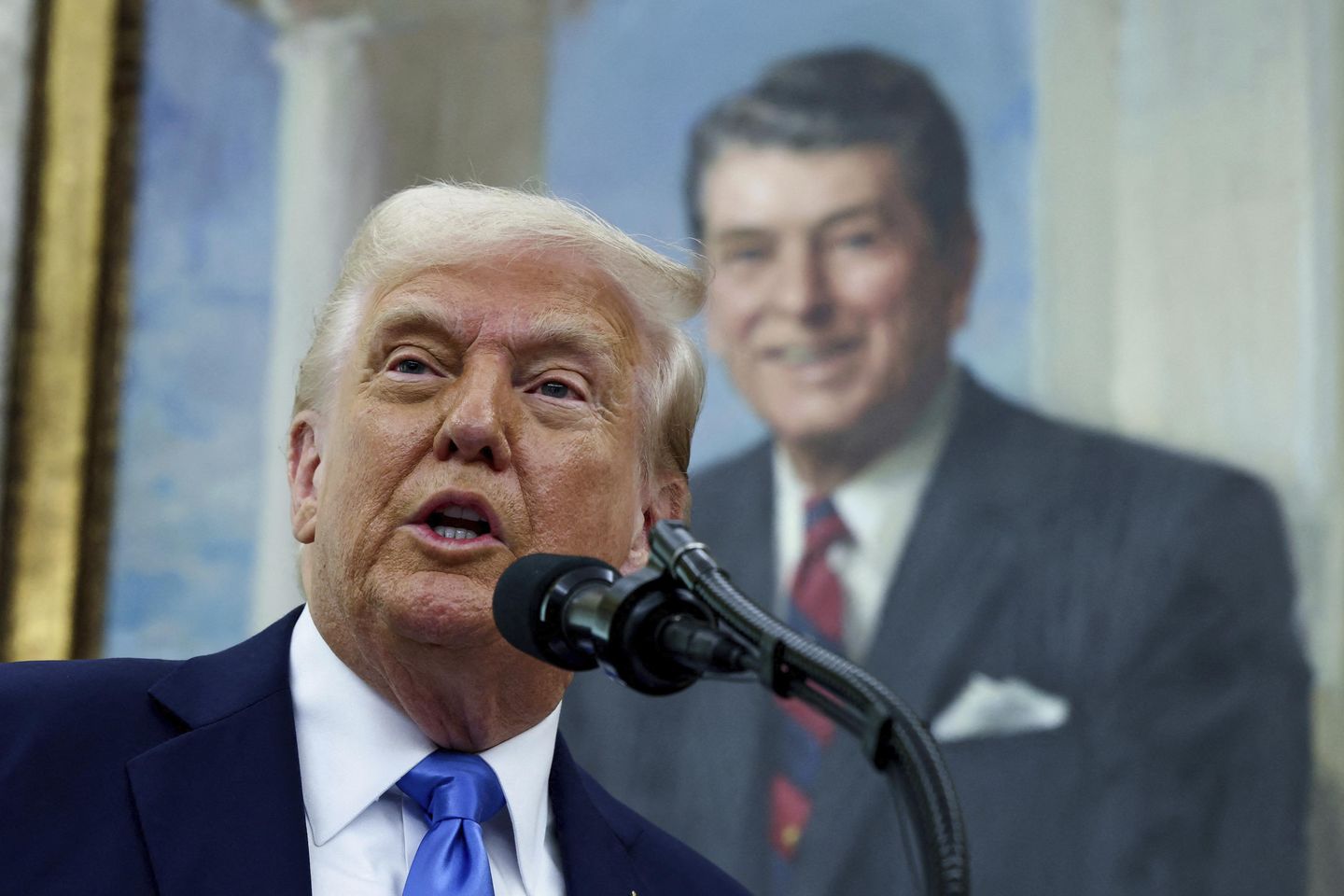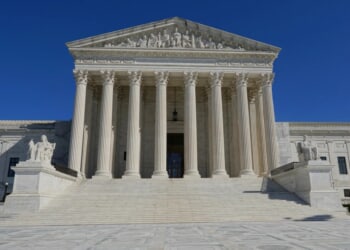
President Trump doesn’t plan to appoint any Democrats to decision-making panels such as the National Labor Relations Board and the Federal Election Commission during his second term, The Washington Times has learned.
He is breaking with more than a century of tradition and challenging the long-accepted legal understanding of how supposedly independent commissions should operate.
Mr. Trump has been telegraphing his plans as he cuts through the government and ousts Democratic appointees from the FEC and the Federal Trade Commission and agencies such as the National Labor Relations Board and the Merit Systems Protection Board.
The White House made the policy explicit in response to questions from The Times.
Karoline Leavitt, the president’s press secretary, flatly said “No” when asked whether he would appoint Democrats.
Taylor Rogers, another presidential spokesperson, expanded on the sentiment.
“President Trump has the lawful authority to manage personnel within the executive branch. President Trump will continue to rid the federal government of bad actors unaligned with his commonsense agenda the American people decisively voted for,” she said.
The agencies are part of Mr. Trump’s broader remake of the federal bureaucracy.
The president, citing his election victory, has argued that he has the power and, indeed, the responsibility to shape the executive branch to achieve his priorities. He has wound down foreign aid agencies and attempted to trim the federal workforce through mass buyouts and firings.
He also has fired commissioners and board members from agencies.
The problem for Mr. Trump is that Congress has established several agencies with “partisan balancing requirements.” Membership is divided between Republican and Democratic appointees.
The Federal Election Commission, for example, is supposed to be evenly split with three appointees from each party. The Election Assistance Commission has four members, also evenly split.
Those with odd-numbered members, such as the Securities and Exchange Commission, the Merit Systems Protection Board and the Federal Trade Commission, give the president’s party the extra seat.
Mr. Trump’s drive to boot Democrats for policy reasons upends that provision. His ouster of Democrats from the MSPB, the FTC and the National Labor Relations Board sparked a tangle of lawsuits.
Judges have been deeply divided over Mr. Trump’s high-profile firings.
Judge Beryl Howell of the U.S. District Court for the District of Columbia labeled Mr. Trump’s firing of an NLRB member a “power grab.”
“A president who touts an image of himself as a ‘king’ or a ‘dictator,’ perhaps as his vision of effective leadership, fundamentally misapprehends the role,” she wrote in ordering that Gwynne A. Wilcox be restored to her post.
A federal appeals court on Friday stayed Judge Howell’s ruling and another ruling restoring a fired member of the Merit Systems Protection Board.
In a 2-1 ruling, the judges said the firings could proceed while the cases are pending in the lower courts.
Judge Justin Walker, a Trump appointee to the U.S. Circuit Court of Appeals for the District of Columbia, said laws restricting a president’s firings to cases with good cause are likely unconstitutional.
“The people elected the president to enforce the nation’s laws, and a stay serves that purpose by allowing the people’s chosen officer to control the executive branch,” Judge Walker wrote.
Mr. Trump is facing a 90-year-old Supreme Court ruling, the Humphrey’s Executor case, in which President Franklin D. Roosevelt sought to fire an FTC member over policy differences. The Supreme Court ruled that firing was illegal and said Congress had the power to create for-cause removal rules.
Mr. Trump’s firing of two FTC members, again for policy reasons, puts the 1935 case to the test.
Maureen Ohlhausen, a former FTC commissioner now with the Wilson Sonsini law firm, said she is unsure who will prevail this time.
“I think some people think it’s cut and dried, that it’s just prohibited, but if you really look at the case and the factors on which it made its decision, again, it’s not a slam dunk either way,” she said. “I just don’t know kind of, how the court today will weigh the different factors.”
A key factor is the power an agency wields. Legal scholars say the more executive power an agency holds, the more leeway Mr. Trump has to fire at will.
Douglas Ross, a professor at the University of Washington School of Law, said the Supreme Court may be ready to overrule Humphrey’s Executor and decide that Congress can’t constrain a president with for-cause removal restrictions.
“There are some members of the court right now who have made it clear they would reverse that old precedent,” Mr. Ross said. “If you look at the six conservatives on the Supreme Court, it’s very possible that there might be a vote by five, if not all six of them, to overrule Humphrey’s Executor.”
In a 2018 article in the Columbia Law Review, Daniel Hemel and Brian Feinstein listed 23 agencies with partisan balancing requirements. Eleven had what the authors called “removal protection,” or a for-cause requirement before their leaders could be ousted.
William Kovacic, a former FTC commissioner and now a law professor at George Washington University, said Mr. Trump hasn’t legally challenged the partisan balancing requirements.
“They’re not attacking that,” he said. “They’re attacking limits on the ability of the president to fire members of the board. So they seem to be saying that, you know, you can put anyone you want as long as we can fire them.”
Mr. Kovacic said there are sound policy reasons for not eliminating bipartisanship.
“It really discounts the role of an independent agency dramatically. It attaches much more significance to these presidential prerogatives than it does to some of these quality control and legitimacy arguments,” he said.





![Trump's Admin Guts Another ‘Rogue Government Agency with Zero Accountability’ [WATCH]](https://www.right2024.com/wp-content/uploads/2025/03/Trumps-Admin-Guts-Another-‘Rogue-Government-Agency-with-Zero-Accountability-350x250.jpg)

![‘We All Owe Him (Elon) a Huge Debt of Gratitude’ [WATCH]](https://www.right2024.com/wp-content/uploads/2025/03/‘We-All-Owe-Him-Elon-a-Huge-Debt-of-Gratitude-350x250.jpg)



![NCAA Champ Salutes President Trump After ‘BIGGEST UPSET IN COLLEGE WRESTLING HISTORY’ [WATCH]](https://www.right2024.com/wp-content/uploads/2025/03/NCAA-Champ-Salutes-President-Trump-After-‘BIGGEST-UPSET-IN-COLLEGE-350x250.jpg)





